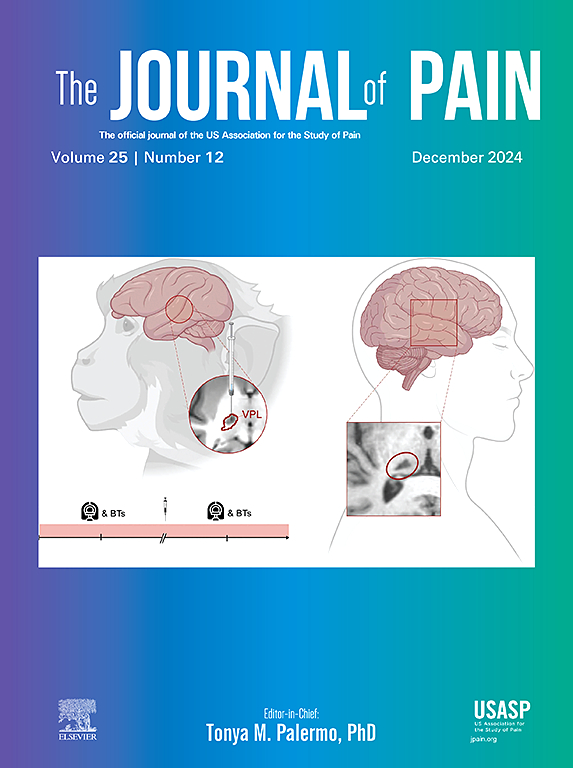Reassurance use and reassurance-related outcomes for low back pain in primary care: A scoping review
IF 4
2区 医学
Q1 CLINICAL NEUROLOGY
引用次数: 0
Abstract
We used a scoping review design to map the available evidence describing the use of reassurance in clinical practice, interventions to increase the delivery of reassurance, and reassurance-related outcome measures. We searched CINAHL, MEDLINE, EMBASE and Cochrane Central from inception to October 2024. Publications were included if they described the use of reassurance or reassurance-related outcome measures in patients with non-specific low back pain (LBP) presenting to primary care. We did not exclude publications on the basis of study design. Data were extracted and charted in accordance with study aims. We included 88 publications describing 66 primary studies. Twenty-one papers described how clinicians used reassurance in primary care, including: information provided (n=16), frequency of use (n=6), challenges providing reassurance (n=7), and importance of individualising reassurance (n=11). Reassurance interventions were investigated in 46 trials. Reassurance interventions were delivered verbally by clinicians to individuals (n=29) or groups (n=14), or via educational materials (n=18). Only one trial measured how reassured the patient felt after the intervention using a single-item non-validated question. Thirty-six trials used indirect measurements of reassurance success, including reductions in: fear-avoidance (n=23), worry (n=8), anxiety (n=8), pain catastrophising (n=10), and further healthcare utilisation (n=12). Relatively few papers have described how clinicians use reassurance in primary care. Reassurance interventions were investigated in 46 trials; however, reassurance was rarely the primary component of the intervention and was often delivered as part of an education intervention. There are no validated measures to directly assess how reassured a patient feels after an intervention.
Perspective
This review maps the available evidence describing how patient reassurance is used and assessed in the management of low back pain. There is limited assessment of the effectiveness of reassurance interventions. Reassurance is rarely the primary component of interventions and there are no validated measures to directly assess patient reassurance.
初级保健中腰痛的安慰使用和与安慰相关的结果:范围综述。
我们采用了范围回顾设计来绘制现有证据图,这些证据描述了在临床实践中使用安慰、增加提供安慰的干预措施以及与安慰相关的结果测量。我们检索了CINAHL, MEDLINE, EMBASE和Cochrane Central从成立到2024年10月。如果出版物描述了在初级保健的非特异性腰痛(LBP)患者中使用安慰或与安慰相关的结果措施,则纳入。我们没有根据研究设计排除出版物。根据研究目的提取数据并绘制图表。我们纳入了88篇出版物,描述了66项主要研究。21篇论文描述了临床医生如何在初级保健中使用保证,包括:提供的信息(n=17)、使用频率(n=6)、提供保证的挑战(n=7)和个性化保证的重要性(n=11)。在46项试验中调查了再保证干预措施。临床医生口头向个人(n=29)或团体(n=14)或通过教育材料(n=18)提供保证干预措施。只有一项试验使用单项非验证问题来测量患者在干预后的安心程度。36项试验使用了间接测量再保证成功的方法,包括:恐惧回避(n=23)、担忧(n=8)、焦虑(n=8)、痛苦灾难(n=10)和进一步医疗保健利用(n=12)的减少。相对较少的论文描述了临床医生如何在初级保健中使用保证。在46项试验中调查了再保证干预措施;然而,保证很少是干预的主要组成部分,而经常作为教育干预的一部分提供。没有有效的措施来直接评估患者在干预后的安心程度。观点:这篇综述描绘了现有的证据,描述了如何在腰痛治疗中使用和评估患者的安慰。对保证干预措施有效性的评估有限。保证很少是干预措施的主要组成部分,也没有有效的措施来直接评估患者的保证。
本文章由计算机程序翻译,如有差异,请以英文原文为准。
求助全文
约1分钟内获得全文
求助全文
来源期刊

Journal of Pain
医学-临床神经学
CiteScore
6.30
自引率
7.50%
发文量
441
审稿时长
42 days
期刊介绍:
The Journal of Pain publishes original articles related to all aspects of pain, including clinical and basic research, patient care, education, and health policy. Articles selected for publication in the Journal are most commonly reports of original clinical research or reports of original basic research. In addition, invited critical reviews, including meta analyses of drugs for pain management, invited commentaries on reviews, and exceptional case studies are published in the Journal. The mission of the Journal is to improve the care of patients in pain by providing a forum for clinical researchers, basic scientists, clinicians, and other health professionals to publish original research.
 求助内容:
求助内容: 应助结果提醒方式:
应助结果提醒方式:


